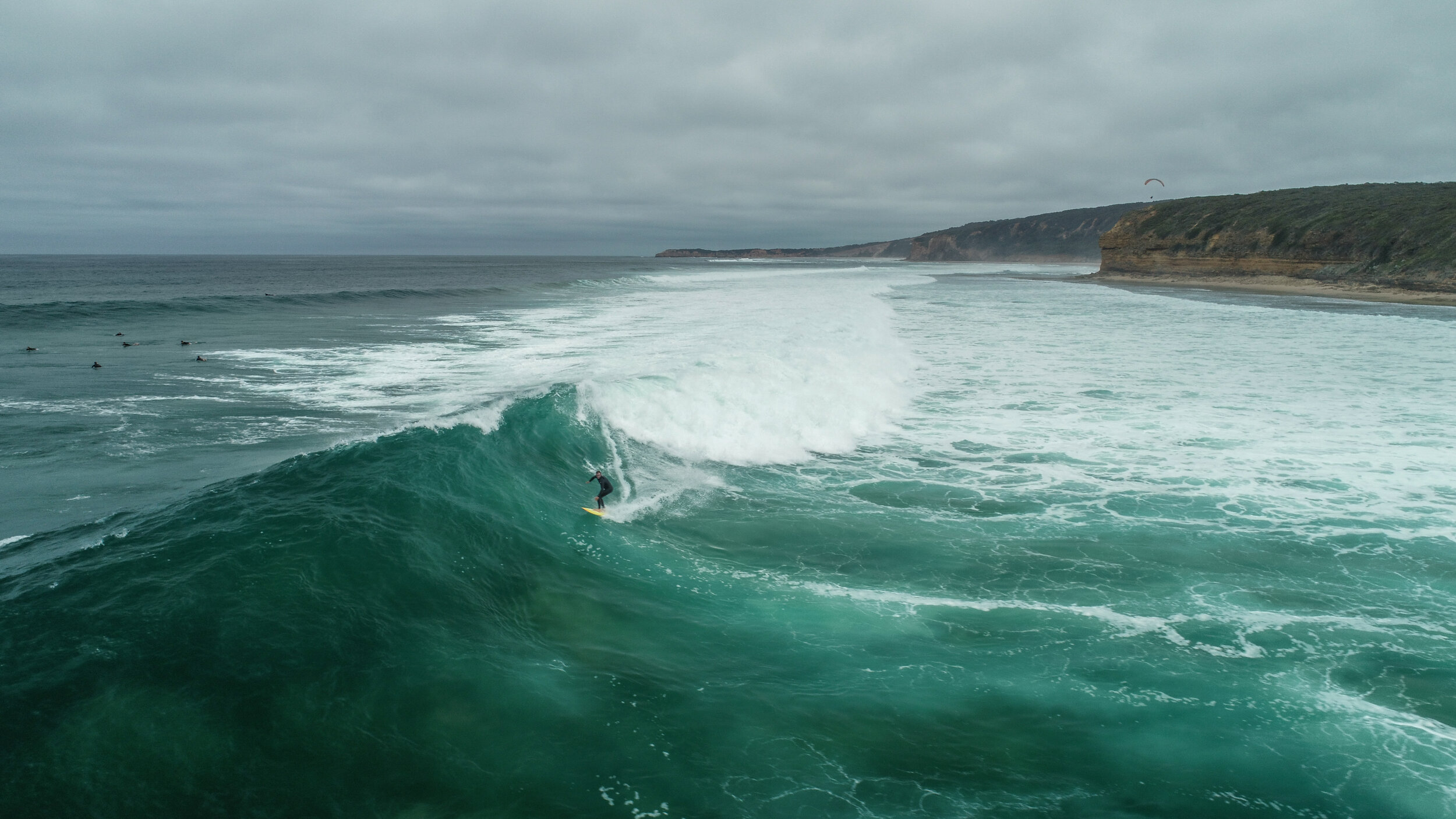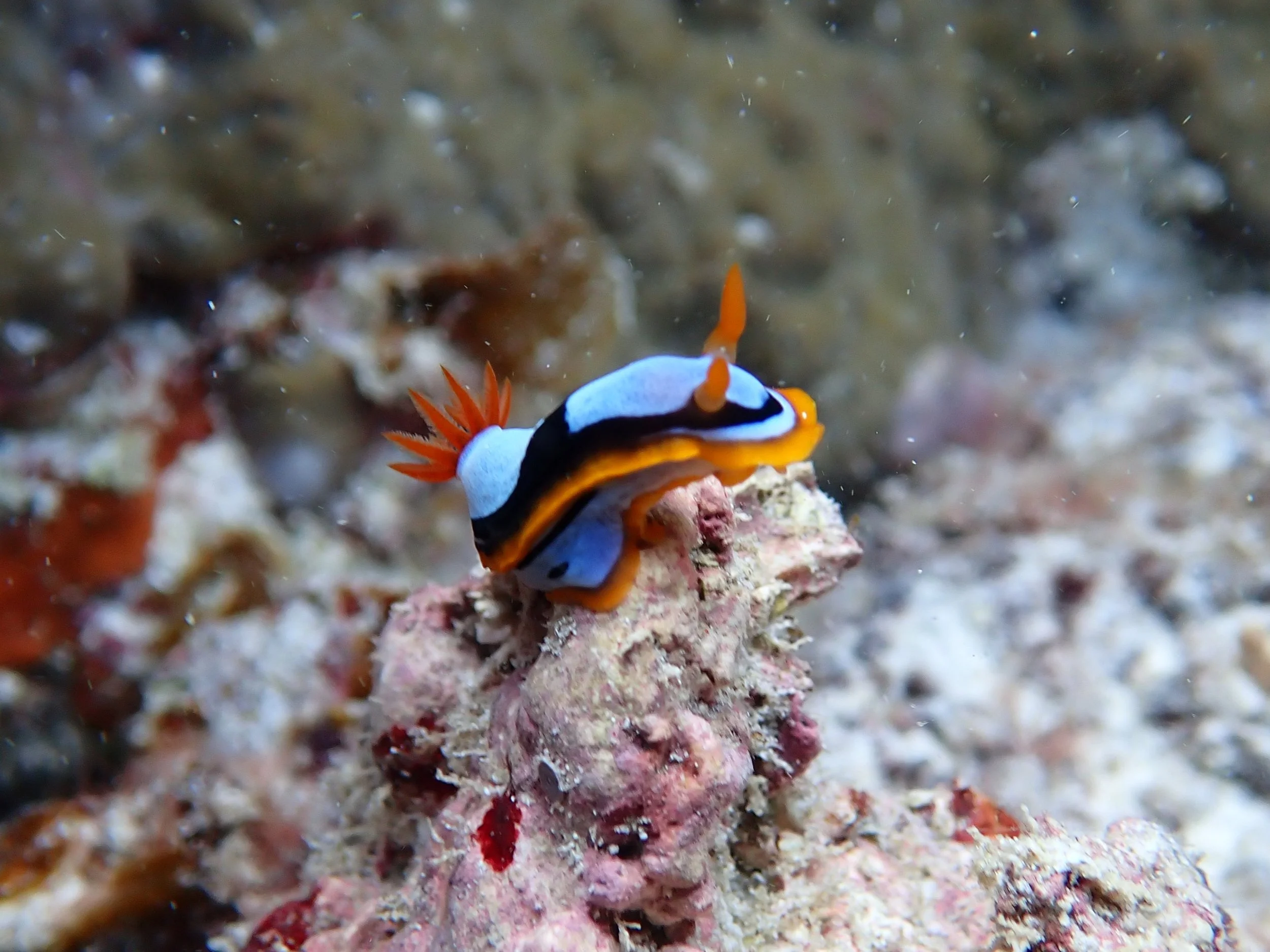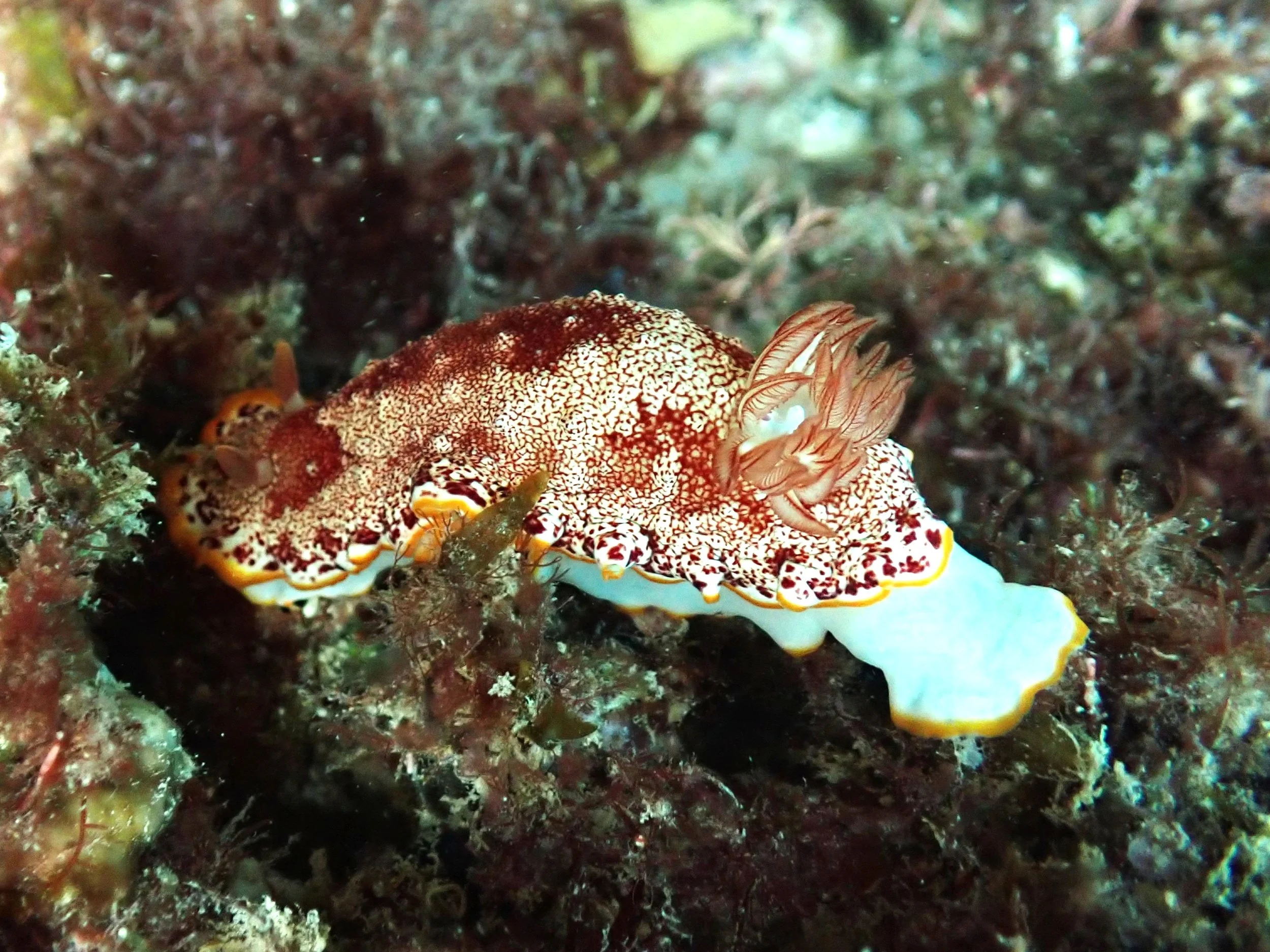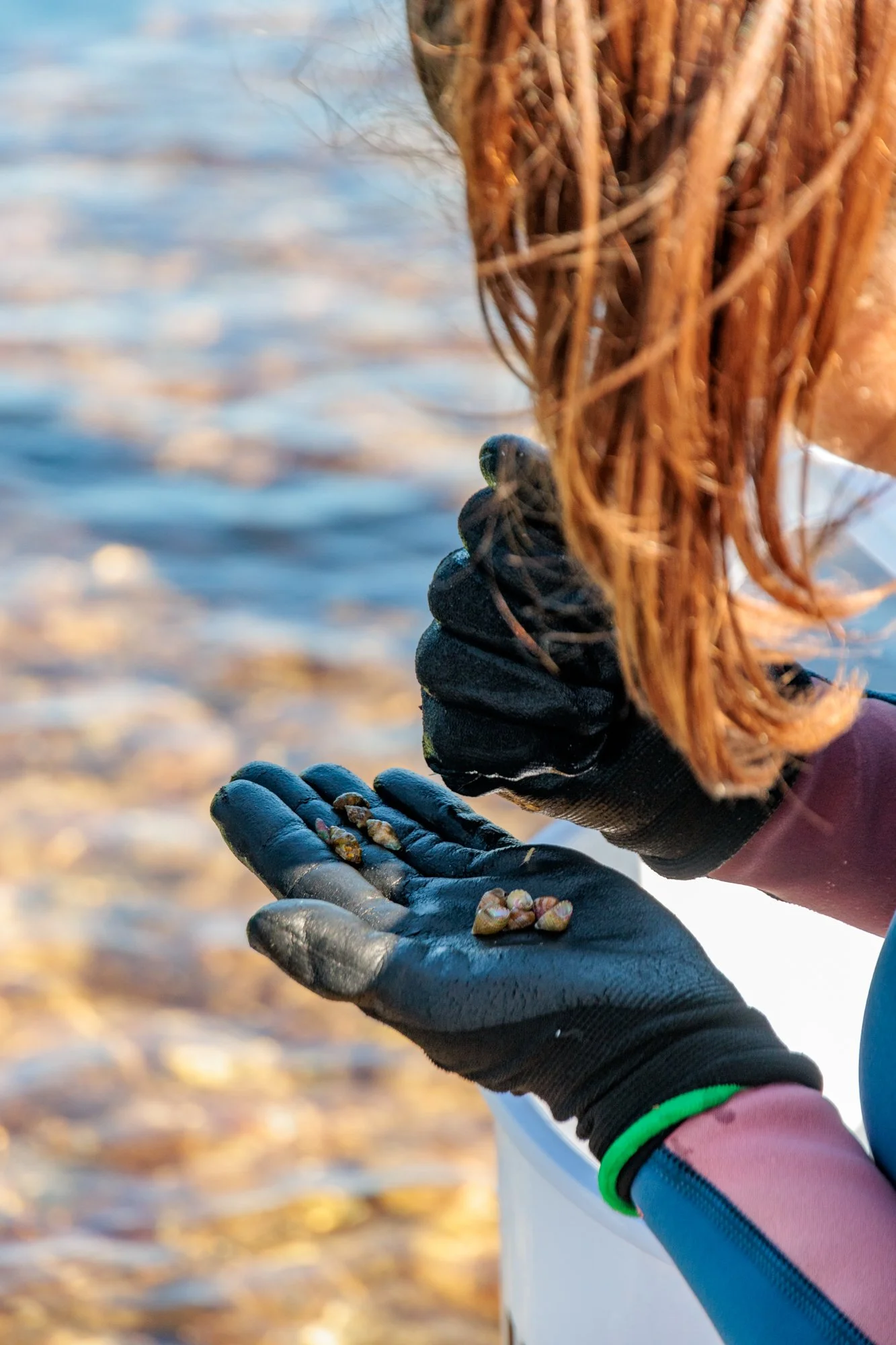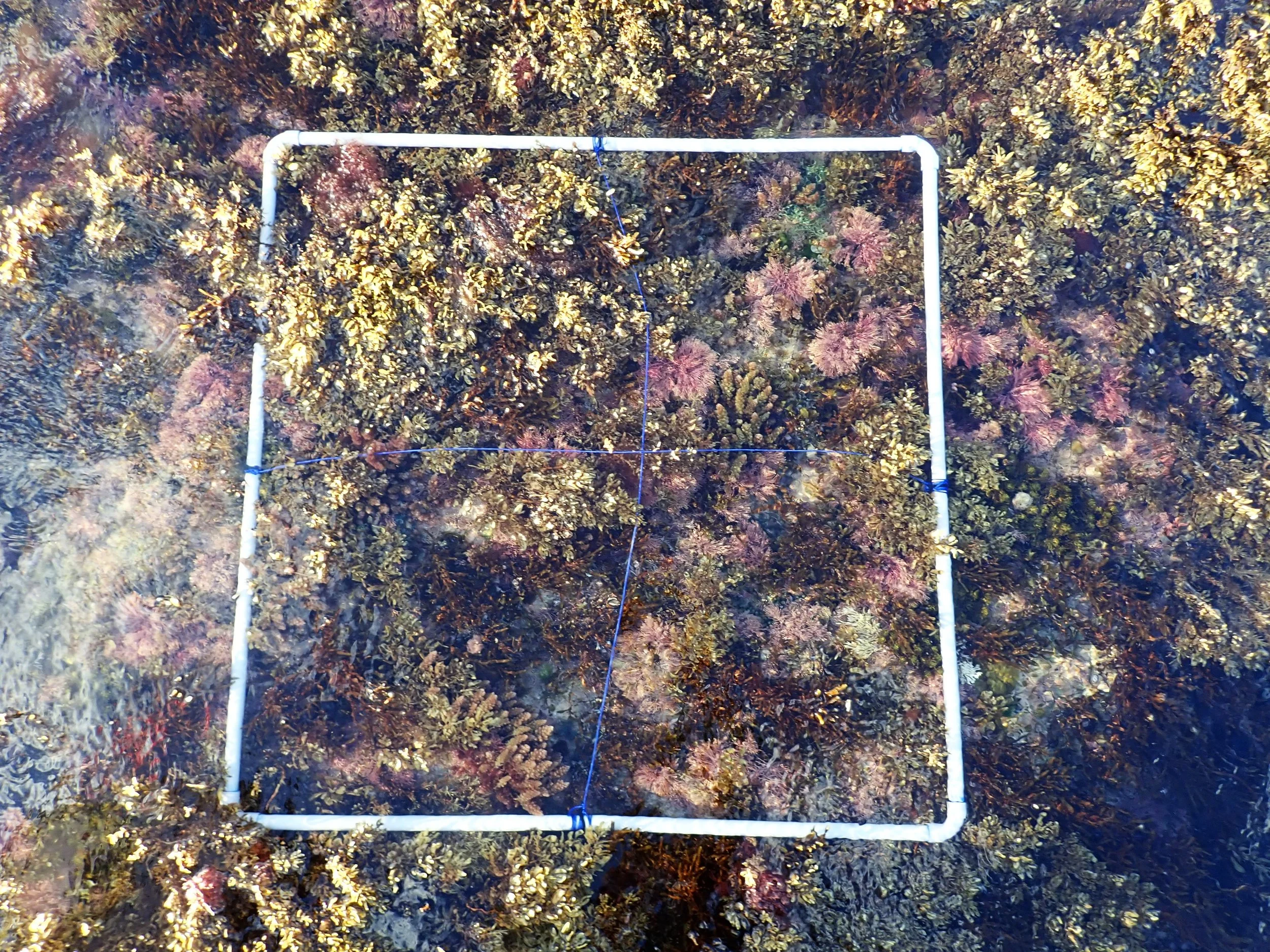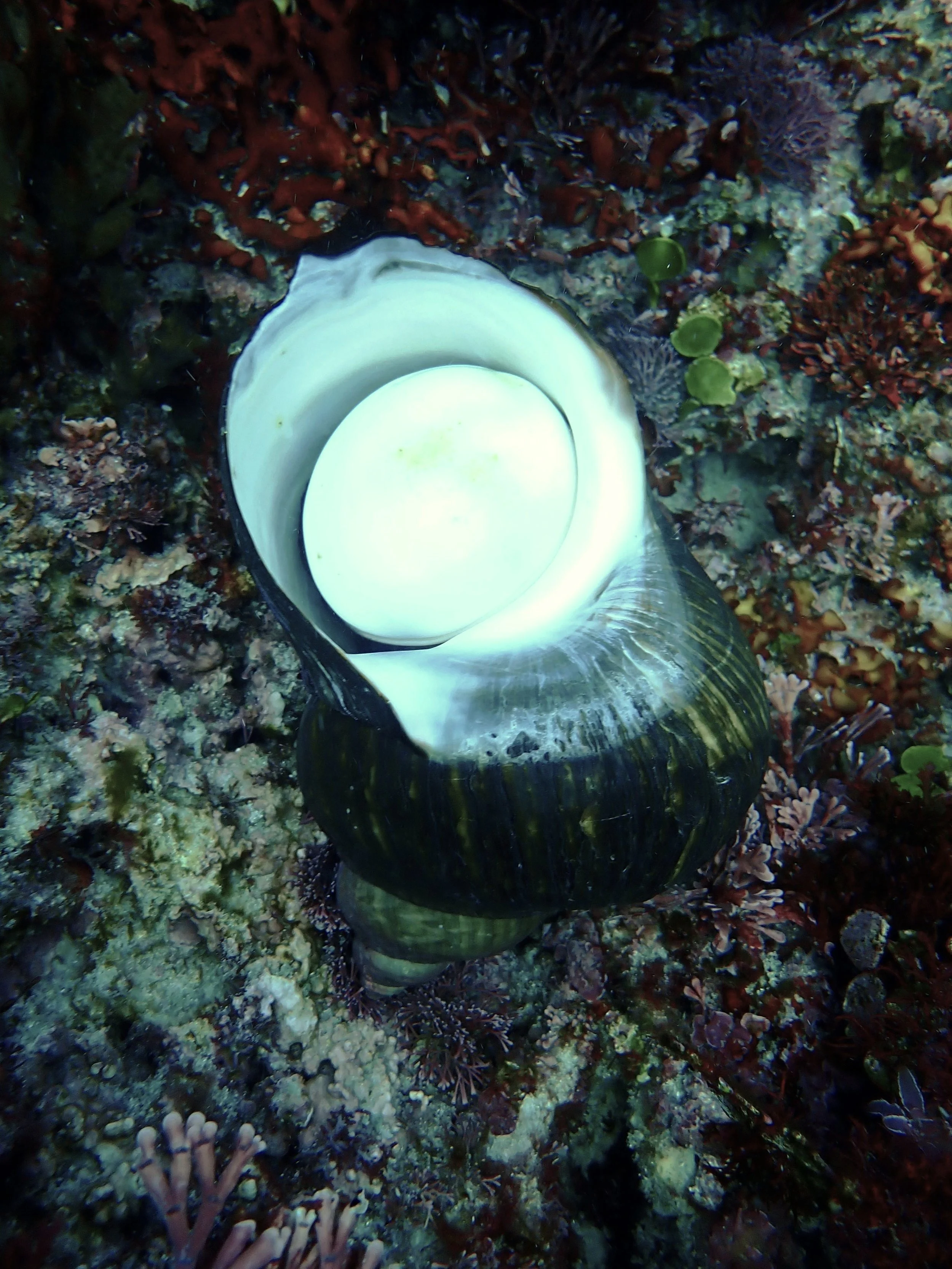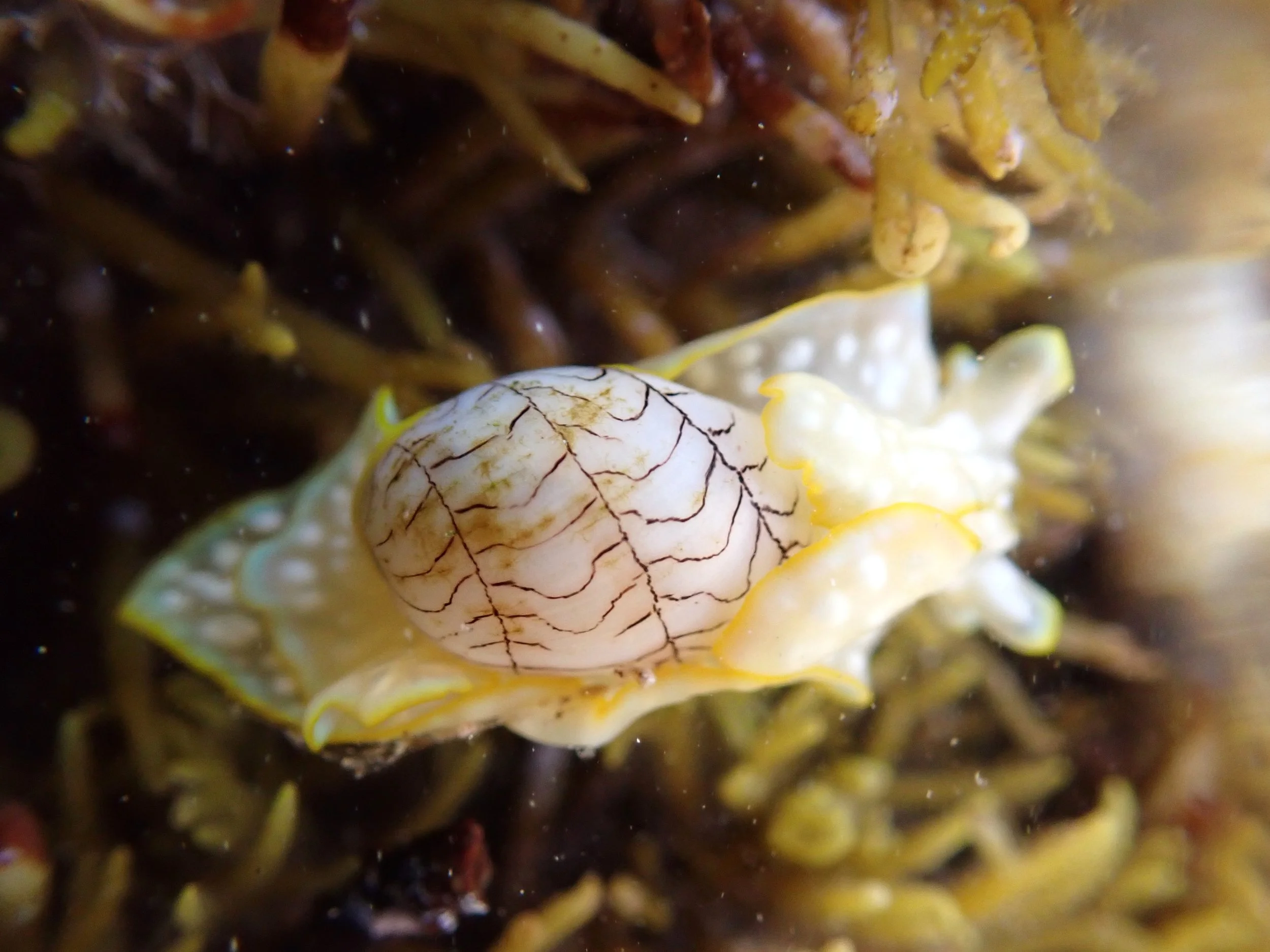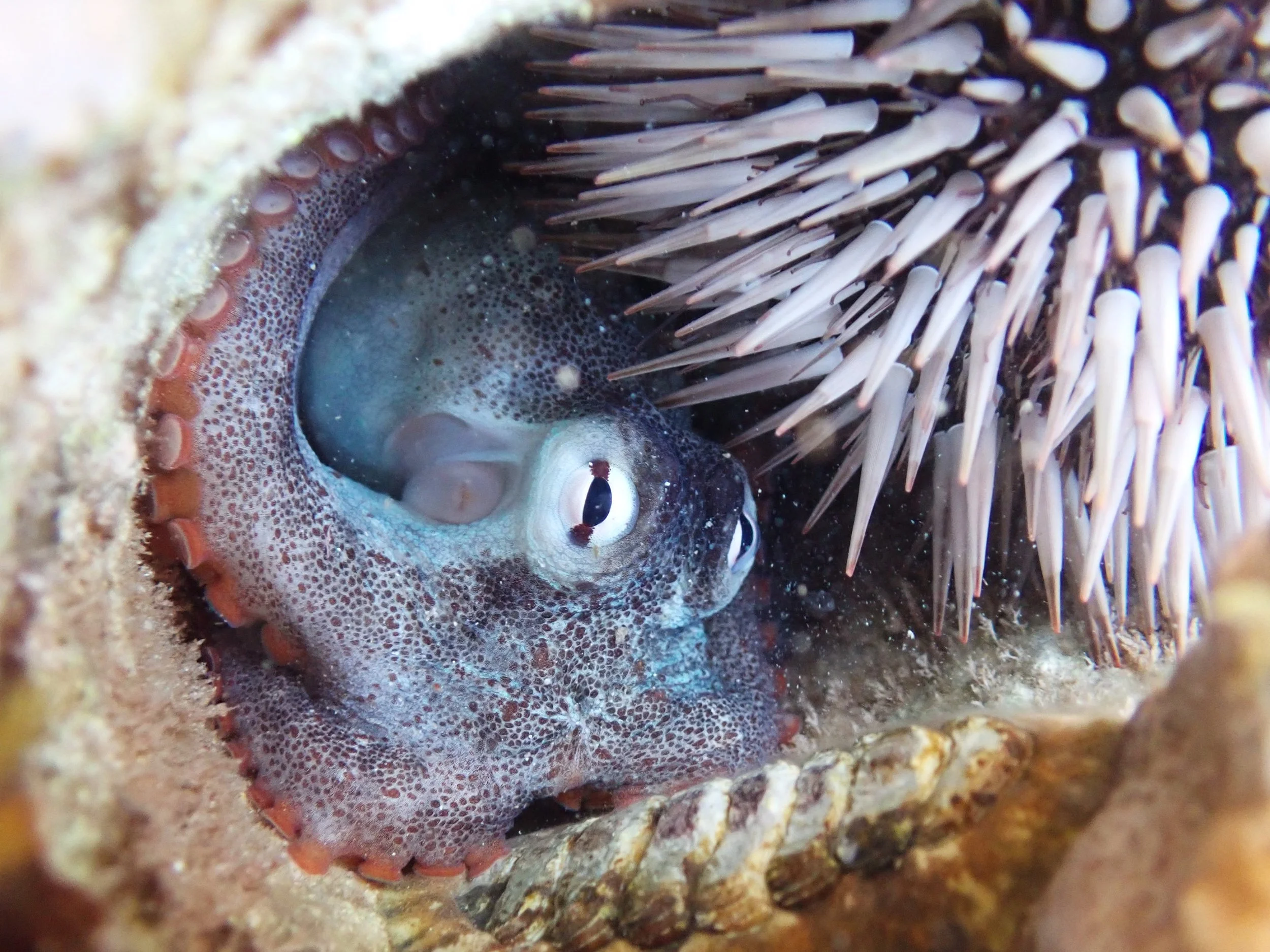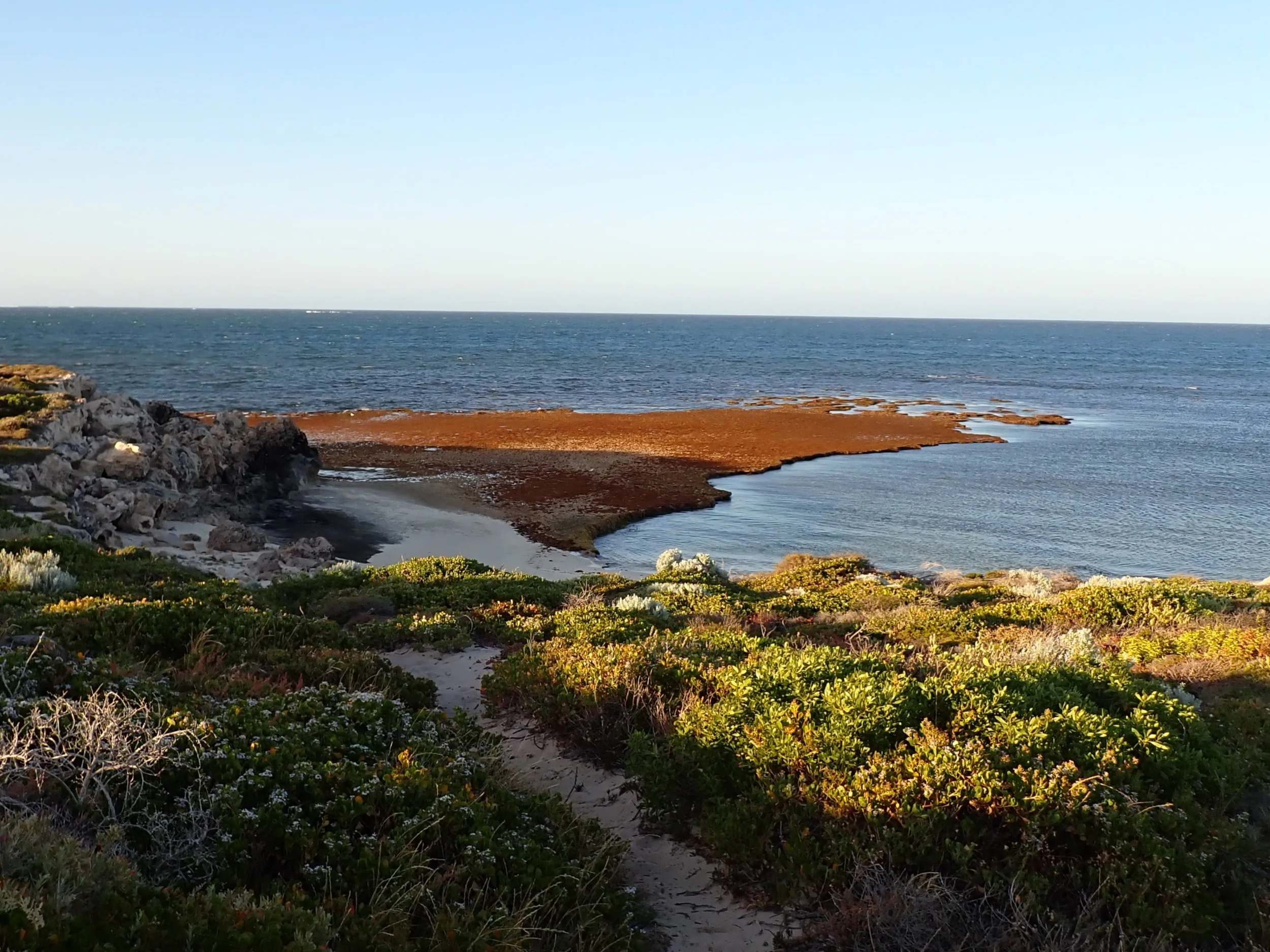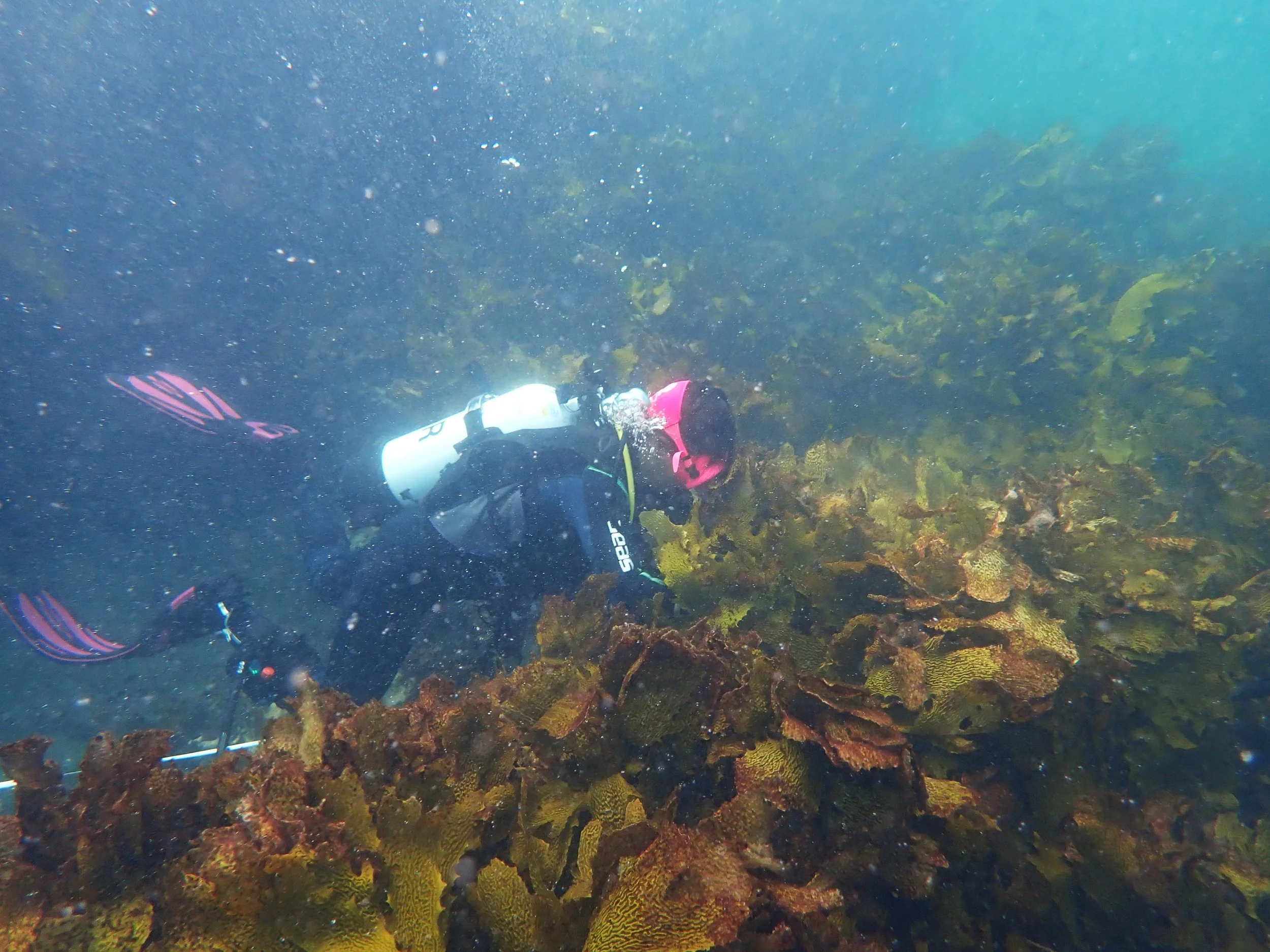
Beneath the canopies
Jurien Bay’s hidden reef life
From the mighty Turbo jourdani, the largest endemic turban snail in the southwest, to eye-catching slugs like our local favourite Chromodoris westraliensis, Jurien Bay’s reefs are home to a diverse array of invertebrate life, hidden beneath seaweed canopies.
Spend a little time here and you start to realise these reefs aren’t just rich in species, they’re full of stories waiting to be shared. In this article you’ll meet some of the creatures that live within the seaweed forests, the people helping to study them, and how you can play a part too.
Chromodoris westraliensis (left) and Goniobranchus tinctorius (right), observed in Jurien Bay Marine Park. Images: Inês Leal (DBCA)Image: Euplica bidentata (dove shell) and Cantharidus pulcherrimus (jewel top shell) found during surveys. Photo – Alan Gill (DBCA)counting critters
At the Marine Science Program (MSP) in the Department of Biodiversity, Conservation and Attractions, research scientist Dr Inês Leal dives below the surface and walks the reef flats to monitor the incredible diversity of invertebrate life of Jurien Bay Marine Park.
This work takes her underwater, where she and other trained scientists scuba dive to survey the subtidal reefs, and onto the reef flats at low tide, where community volunteers join forces with scientists for hands-on intertidal surveys.
Hidden abundance
Over the past few years, Dr Inês and her MSP team together with regional DBCA rangers and managers and external collaborators have recorded more than 105 invertebrate species between Green Head and Wedge Island with the greatest numbers found on the shallow intertidal reefs.
In some spots, more than 400 invertebrates can be packed into a single square metre! One of the most common is Euplica bidentata, a small and often overlooked sea snail that grazes on fine algal films growing on seaweed and seagrass, helping to keep these habitats healthy.
Turbo jourdani . Photo – Inês Leal (DBCA)Chemical armour
Among the more eye‑catching finds is the colourful bubble snail Micromelo undatus (pictured), which hunts cirratulid worms and stores their toxins as a defence against predators (making it an unpalatable toxic meal!). In return, the seaweed and seagrass provide the shelter and structure that grazers, predators and many other invertebrates need, sustaining the reef’s rich biodiversity.
Micromelo undatus by Dr Inês Leal (DBCA)Octopus djinda by Inês Leal (DBCA)How CAN you get involved?
Each year, around ten volunteers join their hands-on intertidal monitoring efforts, and we’re gearing up for the next intertidal survey this November.
These surveys are carried out every two to three years across each of Western Australia’s four temperate marine parks: Jurien Bay Marine Park on the Midwest coast; Marmion and Shoalwater Islands marine parks near Perth; and Ngari Capes Marine Park in the Southwest Region.
An intertidal reef at Jurien Bay Marine Park during low tide The DBCA welcome volunteers from all backgrounds to help document the remarkable invertebrate biodiversity of these reefs, whether you are studying marine science or simply have a keen interest in marine life.
To express your interest, contact our Volunteer Coordination Unit. Your contribution will support the long-term conservation of Western Australia’s unique marine environments.
Dr Inês Leal and volunteers conducting intertidal surveys Photo – Alan Gill (DBCA)